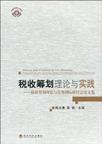税收筹划理论与实践
出版时间:2010-1 出版社:经济科学出版社 作者:陈志勇,薛钢 编 页数:448
内容概要
《税收筹划理论与实践:税收筹划理论与实务国际研讨会论文集》是一本税收筹划理论与实务国际研讨会论方集,包括四部分:第一部分,税收筹划理论研究,第二部分,税收筹划实务研究,第三部分,税制改革研究,第四部分,税收筹划教学研究等。
书籍目录
第一部分 税收筹划理论研究Using omputer Assisted Veriiication in the Detection of Tax:Evasion对中国反避税监管的几点思考:国际反避税实践经验的借鉴税收筹划的若干重要问题探析避税与反避税的三维视角发挥行业协会作用,推进税收筹划业务发展基于法律视角下的企业税收筹划风险及其防范措施研究税收筹划与避税:有相近之处更有性质上的区别影响纳税筹划设计主体的因素分析税收筹划风险:成因、类型与防范国际税收筹划的缘起、方式及启示企业转让定价风险控制浅析浅析企业纳税筹划风险及其管理试论政府税收筹划跨国企业转让定价税制的国际比较及启示推进我国预约定价安排制度的思考转让定价中关税与所得税的协调初探转让定价风险的控制与防范论税务筹划行为的影响上市公司薪酬激励与经理人税收筹划努力微观主体行为与宏观调控需要第二部分 税收筹划实务研究lnitlal Ettects o±V alue Added Tax Introduction and l~lanning in the Republic of Sel"bia我国“走出去”企业税收筹划研究企业合并、分立的税收筹划探析我国资产重组税收筹划方法探析两种可行的企业所得税筹划方法及其运用企业重组业务的税收筹划企业并购中的税收筹划分析企业合并中的所得税筹划变化与案例解析非居民企业所得税税收筹划研究新企业所得税税收筹划空间探索高校教师个人所得税筹划研究新增值税..、营业税法下的混合销售和兼营行为的纳税筹划保险储金业务营业税筹划当前中小企业纳税筹划若干问题探析房地产开发企业税收筹划的案例分析酒类企业的税收筹划第三部分 税制改革研究Small Business Taxation ln AustraliaA Critical Review 0n Imposing the VAT in the Republic of SerbiaEnvironment Protection and Taxation In Optimization Procedures受控外国公司所得税课税制度比较与借鉴我国个人所得税重点税源结构、问题与对策中国可税GDP与税收收入的实证分析我国结构性税制改革的历程、效应及其深化对策OECD国家税制改革与经济增长关系研究中国财税文化的呼唤第四部分 税收筹划教学研究税务专业实验教学体系探索研究中国税收筹划的产生与发展关于国内税收筹划课程建设的思考《税收筹划》课程的案例教学问题研究
章节摘录
ware. Further information can be obtained from Many audit procedures must be performed manually. For example, where source documents must be examined, this is a manual procedure. Such procedures are usually limited to the examination of a sample of transactions. Where procedures can be performed electronically, however, they can be applied to all records. It is also common to use CAV software on procedures that would be impossible to perform manually. For example, comparing accounting records with bank statements, to detect duplicate records or omissions is usually not feasible if done manually because of the large volumes involved. To demonstrate the capabilities of CAV software, we will use the audit of a busy restaurant as an illustration. Toscani is a large Italian restaurant. IT systems are used for the kitchen and for the accounting records. Each table in the restaurant is numbered for identification and track ing of orders. Orders for meals and drinks are taken by waiting staff using a personal digital assistant (PDA) device that communicates directly over the wireless network with the kitchen IT system. Chefs use the kitchen system to schedule food preparation for each table. The cashier refers to the kitchen system when billing customers. Approximately 75% of sales are paid for using credit cards; the remaining 25% is paid for in cash. Accounting clerks take the records of sales from the kitchen system and enter the transactions in the separate accounting system. Cash is periodically banked. When planning the tax audit of a restaurant like Toscani, auditors focus on specific risks associated with audit objectives. For example, common approaches to evade tax include understating restaurant sales by not recording all kitchen sales in the accounting system, and overstating purchases of meat, vegetables, etc. Sales paid for by credit card are easily traced by the tax auditor to bank records, but cash sales can be untraceable if they are not recorded in the accounting system. Purchases of ingredients for cooking meals can be overstated by entering overstated amounts, entering duplicate transac- tions or by purchasing excess meat and vegetables for the kitchen, but taking these for consumption at home. CAV software can be used to perform many different types of tests and other functions when the auditees data is in electronic form.
图书封面
评论、评分、阅读与下载
